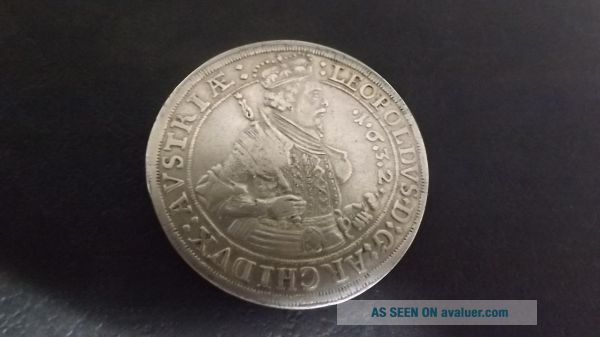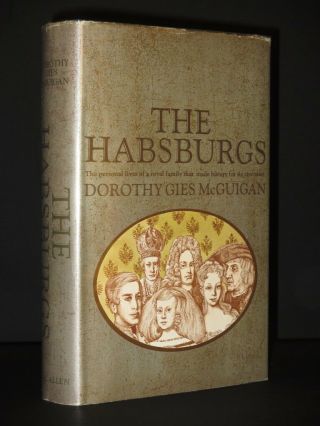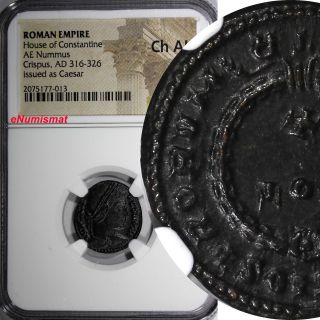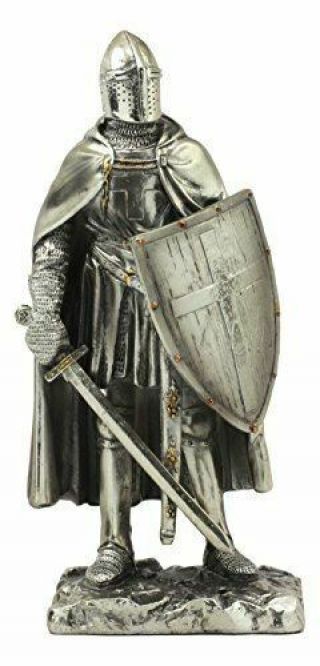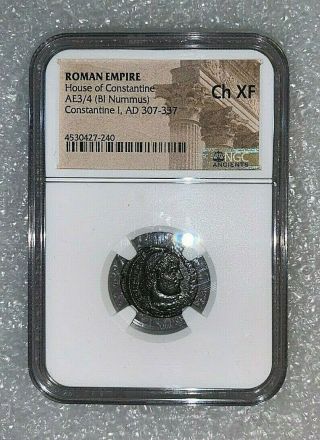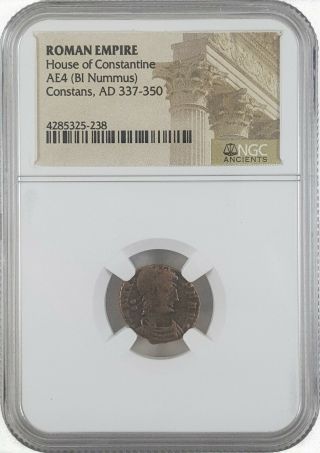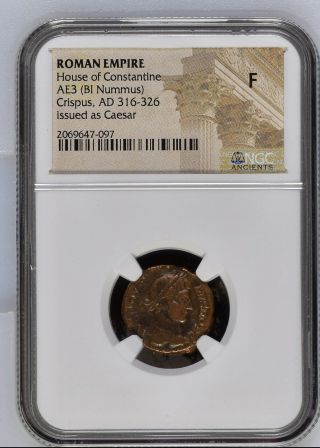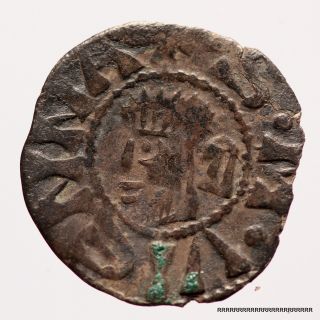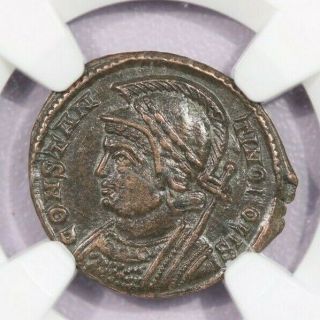1632 Holy Roman Empire - House Of Habsburg Austrian Silver Taler Leopold V
Item History & Price
| Reference Number: Avaluer:35842747 | Circulated/Uncirculated: Uncirculated |
| Certification: Uncertified |
1632 Holy Roman Empire - House of Habsburg Austrian Silver Taler Leopold V Archduke of Further Austria. Erzherzog Tyrol, Hall Mint. Weight 28.28g Diameter 42 mm Rolled flan Posthumne embossing by Marie de Medici as a guardian. An attractive coin with aged silvery gray patina and sharp details.
Obverse Description: Crowned half-length armoured bust of Leopold and crowned battleship looking forward to right holding sceptre in right hand with his left hand on his sheaved sword�...�� symbolic weapon of the knightly fighter. Date 1 . 6 . 3 . 2 . in right field, within inner beaded circle.
Obverse Legend: LEOPOLDVS : D : G :-ARCHI DVX : AVSTRIAE
Translated: Leopold by the Grace of God Archduke of Austria
Reverse Description: Crowned coat of arms within Chain of Order of the Golden Fleece, Tyrolian eagle in centre.
Reverse Legend: DVX . BVRGVNDI (Sheep with golden fleece))-COMES . TIROLI
Translated: Duke of Burgundy Count of Tyrol
Reference: DAV-3338. KM-804.2.
..
If for any reason you are not happy with your purchase we will refund your money back (see return policy)
Want to see more interesting Coins and Medals? Check out my other listings.
Taler
The Taler is a Silver Dollar that can be said to of have evolved from the Guldengroschen which was a large silver coin originally minted in Tyrol in 1486 during the reign of Sigismund the Archduke of Austria which because of its novel and particularly well-crafted coins, resulted in other realms imitating and minting of a series of silver denominations in imitation in order to compete and profit from the needs of not only a growing local economy but also from securing opportunities to finance transactions of an international nature that were arising from the discoveries in the New World.
Salzburg’s Archbishop Leonhard von Keutschach (1495 to 1519) was the first to follow Sigismund’s example and minted large silver coins termed Rübentaler, probably struck in the mint at Hall. Then around 1500, the rulers of Saxony also began to strike a silver gulden, and then in 1520, the counts of Schlick, owners of the Joachimsthal mine in Bohemia, began to produce an abundance of guldengroschen.
These coins’ epithet – Joachimsthaler – is the origin of the word thaler (a name that lives on in today’s dollar) and soon came to designate any large silver coin.
Ruler at time of minting
Leopold (1619-1632) Archduke of Austria
Leopold V, Archduke of Further Austria (Graz, October 9, 1586 – September 13, 1632 in Schwaz, Tirol) was the son of Archduke Archduke Charles II of Inner Austria, and the younger brother of Emperor Ferdinand II, father of Ferdinand Charles, Archduke of Further Further Austria, He was Bishop of Passau and Strasburg (until 1625) and Archduke of Further Austria including Tirol.
He was invested as bishop in 1598, as a child, even though he had not been ordained as a priest and became Bishop of Strasbough in 1607, a post which he held until 1626. From 1609 onwards he fought with his mercenaries in the War of the Julich succession against Maximillian III Archduke of Further Austria in Tirol, and 1611 for Rudolf II in Bohemia. In 1614, he financed the construction of the Church of the Jesuit College of Molsheim, inside of which his coat of arms is since prominently displayed.
In 1619 upon the death of his kinsman and former rival, he became governor of Maximilian's inheritance: Further Austria and Tirol, where he attained the position of a sovereign, i.e. Archduke of Further Austria from 1623 to 1630. He had the Custom House and the Jesuit Church be built in innsbuck. He fought for the Veltin and defended Tirol against the Swedes in 1632.
With his wife Claudia de' Medici, he became the founder of a sideline of the Habsburg family, which persisted until 1665 - the most recent line of Archdukes of Further Austria.
Hall Mint
Castle Hasegg.
Hall, a city in the Austrian State of Tyrol was mentioned for the first time in 1232. And again in 1256 when reference was made to its production of salt. Thanks to its economic importance in 1286 Hall was granted the right to hold a market, in 1303 it has received the municipal law. During the following centuries the salt mines in the neighboring valley Halltal made Hall the central trading-town in Tyrol and outdid even Innsbruck.
In 1477 Archduke Sigmund of Tyrol ordered the transfer of the Mint from Meran to Hall which resulted in Hall's international importance and outstanding reputation. This move was primary influenced due to Archduke Sigmund seeking to profit from trade which was becoming more heavily reliant on coinage for payment rather than bartering and of which there was a shortage of gold guilders in circulation and gold mines within his territories to produce additional coinage.
Thus Sigmund derived the plan to mint silver coins ten times the value of the gold guilders and as Hall already on the one hand by the defense wall around the town-centre protection for the Mint was appropriately assured and on the other hand by the nearby silver-mines in Schwaz, would be able to provide the silver for minting to which he could also make a profit by way of tariff on the coinage
In 1486 the first high-quality silver-coin, the Taler, was produced at Hall with in the 16th century technical innovations assured to maintain the exceptional reputation of the Mint. For the first time in 1567 the roller-press coinage was introduced for regular use and replaced the minting by hammer. The new technology was exported via the Segovia Mint in Spain (which formed part of the Habsburg Empire) overseas to South America.
However, beside these technical aspects, the Mint in Hall exerted world- wide influence through the "Great Coinage Reform" with its Taler on the currency-systems and consequently on the national economies. In 1806 the mint ceased commercial production and in 1809 the installations of the Mint were dismantled and partly moved to Munich.
Typical Mint in 1600s
The outside of the mill. Big wooden wheel under the waterfall. It turns by means of water running
Mill wheel
The wheel rotates the arbor connected to three heavy hammers for coining. The oven can be seen to the left.
Cangs were made here – they are ingots of silver of the needed mark of assay. They were burnt and beaten out to the needed thickness; then planchets were cut with the help of tinsnips. Ready-made coin circles were matched and then corrected by weight.
Roller Dies for minting
The roller press utilised several die impressions which were cut on a pair of rollers and a strip of coin metal passed between them as they turned. The resulting strip of coins was then taken either to a punch press, where the coins were punched off the strip, or the coins were punched out by hand. At a time when each blank had to be placed by hand on the anvil die of a standard press, and then removed by hand, the roller press provided a significant savings in time.
A corollary result of the roller process was a tendency to produce coins with a curvature along one axis. This made them a bit difficult to stack, which was a definite drawback. Sometimes one will even find on occasion what appears to be a double bend. Usually this will be on larger, thicker coins such as half thalers and talers. The feature is explained as either a kink in the smooth turning of the rollers or else a deliberate act of the mint worker, who, seeing a not very well struck coin coming out, backed up the rollers to try again.
Rollers for roller milling and unfinished sheet metal strip showing the obverse and reverse of a Rudolf II (1575 to 1612) double thaler, Hall, 1604
The Schwaz Silver mine The “mother of all mines”, the silver mine of Schwaz, was the biggest silver mine of the Middle Ages more than 500 years ago and at its peak had more than 11, 000 miners working it. In the course of time the silver mine Schwaz became the main silver mine worldwide and was known far beyond its borders in the 15th century. It began – so the legend goes – in 1409, when the farmhand Gertraud Kandler noticed while looking after the cattle that a bull had uncovered a silver-bearing stone with its horns. Mountain chronicles report that in 1420 these mountains in Falkenstein which were rich had been opened up and lots of foreign mountain people from Bohemia, Saxony and other German states moved to Schwaz.At its height during the Middle Ages, it was an important silver mining center, providing mineral wealth for both the Fugger banking family and, through them, for the Austrian emperors. During this period it had a surge of immigration and its population grew to about 20, 000 inhabitants making it thesecond largest city in the Austrian Empire, after Vienna.
The Schwaz Silver mine
Contact Details
Aussiecoinsdownunder
fortess123 outlook.com
Terms of sale
Payment Policy
Only PayPal is Accepted.
Payment is expected within 48 hours. If you're bidding on other items, please let me know prior to issuing invoice so I can try and ship together and pass on savings to you.
Shipping Policy
Best endeavour will be used to ship items on the next business day of receiving full payment.
Unless otherwise specified, I ship all coins in protective sleeves and enclose in bubble wrapped envelopes to protect. I absorb material and handling costs in my shipping rates.
I ship worldwide. Postage costs are flat.
I generate shipping labels from PayPal. Please make sure the information is correct with all details required to ensure speedy arrival.
I ship from Australia and receipt will depend on a range of circumstances pertaining to the method chosen to ship.
International Shipping
Any Import duties, taxes and charges are the buyer's responsibility.
If unsure please check with your country's customs office to see if there are any additional costs prior to bidding/buying.
If there are any charges they will be normally collected by the delivering freight (shipping) company or when you pick the item up. Please do not confuse them for my shipping charges.
Although it is an extra cost we recommend insurance on items that are over $200 and on any deemed non replaceable..
Returns Policy
We endeavour to provide accurate descriptions and details of the items for sale and any opinion of quality is just that- our opinion and we give no warranties either expressed or implied as to our opinion especially respecting grades. This is because grading can vary depending on many factors such as tone colour strike blemishes and overall combination of all the before mentioned even between professional graders so please make your own examination from the photos so as to make your own assessment.
If for whatever reason you are not completely happy with your purchase, please email me with your concerns within 7 days and if they cannot be resolved, then so long as you return it to me in the same condition as it was sent I will give you a refund of the sale cost of the item.
Obverse Description: Crowned half-length armoured bust of Leopold and crowned battleship looking forward to right holding sceptre in right hand with his left hand on his sheaved sword�...�� symbolic weapon of the knightly fighter. Date 1 . 6 . 3 . 2 . in right field, within inner beaded circle.
Obverse Legend: LEOPOLDVS : D : G :-ARCHI DVX : AVSTRIAE
Translated: Leopold by the Grace of God Archduke of Austria
Reverse Description: Crowned coat of arms within Chain of Order of the Golden Fleece, Tyrolian eagle in centre.
Reverse Legend: DVX . BVRGVNDI (Sheep with golden fleece))-COMES . TIROLI
Translated: Duke of Burgundy Count of Tyrol
Reference: DAV-3338. KM-804.2.
..
If for any reason you are not happy with your purchase we will refund your money back (see return policy)
Want to see more interesting Coins and Medals? Check out my other listings.
Taler
The Taler is a Silver Dollar that can be said to of have evolved from the Guldengroschen which was a large silver coin originally minted in Tyrol in 1486 during the reign of Sigismund the Archduke of Austria which because of its novel and particularly well-crafted coins, resulted in other realms imitating and minting of a series of silver denominations in imitation in order to compete and profit from the needs of not only a growing local economy but also from securing opportunities to finance transactions of an international nature that were arising from the discoveries in the New World.
Salzburg’s Archbishop Leonhard von Keutschach (1495 to 1519) was the first to follow Sigismund’s example and minted large silver coins termed Rübentaler, probably struck in the mint at Hall. Then around 1500, the rulers of Saxony also began to strike a silver gulden, and then in 1520, the counts of Schlick, owners of the Joachimsthal mine in Bohemia, began to produce an abundance of guldengroschen.
These coins’ epithet – Joachimsthaler – is the origin of the word thaler (a name that lives on in today’s dollar) and soon came to designate any large silver coin.
Ruler at time of minting
Leopold (1619-1632) Archduke of Austria
Leopold V, Archduke of Further Austria (Graz, October 9, 1586 – September 13, 1632 in Schwaz, Tirol) was the son of Archduke Archduke Charles II of Inner Austria, and the younger brother of Emperor Ferdinand II, father of Ferdinand Charles, Archduke of Further Further Austria, He was Bishop of Passau and Strasburg (until 1625) and Archduke of Further Austria including Tirol.
He was invested as bishop in 1598, as a child, even though he had not been ordained as a priest and became Bishop of Strasbough in 1607, a post which he held until 1626. From 1609 onwards he fought with his mercenaries in the War of the Julich succession against Maximillian III Archduke of Further Austria in Tirol, and 1611 for Rudolf II in Bohemia. In 1614, he financed the construction of the Church of the Jesuit College of Molsheim, inside of which his coat of arms is since prominently displayed.
In 1619 upon the death of his kinsman and former rival, he became governor of Maximilian's inheritance: Further Austria and Tirol, where he attained the position of a sovereign, i.e. Archduke of Further Austria from 1623 to 1630. He had the Custom House and the Jesuit Church be built in innsbuck. He fought for the Veltin and defended Tirol against the Swedes in 1632.
With his wife Claudia de' Medici, he became the founder of a sideline of the Habsburg family, which persisted until 1665 - the most recent line of Archdukes of Further Austria.
Hall Mint
Castle Hasegg.
Hall, a city in the Austrian State of Tyrol was mentioned for the first time in 1232. And again in 1256 when reference was made to its production of salt. Thanks to its economic importance in 1286 Hall was granted the right to hold a market, in 1303 it has received the municipal law. During the following centuries the salt mines in the neighboring valley Halltal made Hall the central trading-town in Tyrol and outdid even Innsbruck.
In 1477 Archduke Sigmund of Tyrol ordered the transfer of the Mint from Meran to Hall which resulted in Hall's international importance and outstanding reputation. This move was primary influenced due to Archduke Sigmund seeking to profit from trade which was becoming more heavily reliant on coinage for payment rather than bartering and of which there was a shortage of gold guilders in circulation and gold mines within his territories to produce additional coinage.
Thus Sigmund derived the plan to mint silver coins ten times the value of the gold guilders and as Hall already on the one hand by the defense wall around the town-centre protection for the Mint was appropriately assured and on the other hand by the nearby silver-mines in Schwaz, would be able to provide the silver for minting to which he could also make a profit by way of tariff on the coinage
In 1486 the first high-quality silver-coin, the Taler, was produced at Hall with in the 16th century technical innovations assured to maintain the exceptional reputation of the Mint. For the first time in 1567 the roller-press coinage was introduced for regular use and replaced the minting by hammer. The new technology was exported via the Segovia Mint in Spain (which formed part of the Habsburg Empire) overseas to South America.
However, beside these technical aspects, the Mint in Hall exerted world- wide influence through the "Great Coinage Reform" with its Taler on the currency-systems and consequently on the national economies. In 1806 the mint ceased commercial production and in 1809 the installations of the Mint were dismantled and partly moved to Munich.
Typical Mint in 1600s
The outside of the mill. Big wooden wheel under the waterfall. It turns by means of water running
Mill wheel
The wheel rotates the arbor connected to three heavy hammers for coining. The oven can be seen to the left.
Cangs were made here – they are ingots of silver of the needed mark of assay. They were burnt and beaten out to the needed thickness; then planchets were cut with the help of tinsnips. Ready-made coin circles were matched and then corrected by weight.
Roller Dies for minting
The roller press utilised several die impressions which were cut on a pair of rollers and a strip of coin metal passed between them as they turned. The resulting strip of coins was then taken either to a punch press, where the coins were punched off the strip, or the coins were punched out by hand. At a time when each blank had to be placed by hand on the anvil die of a standard press, and then removed by hand, the roller press provided a significant savings in time.
A corollary result of the roller process was a tendency to produce coins with a curvature along one axis. This made them a bit difficult to stack, which was a definite drawback. Sometimes one will even find on occasion what appears to be a double bend. Usually this will be on larger, thicker coins such as half thalers and talers. The feature is explained as either a kink in the smooth turning of the rollers or else a deliberate act of the mint worker, who, seeing a not very well struck coin coming out, backed up the rollers to try again.
Rollers for roller milling and unfinished sheet metal strip showing the obverse and reverse of a Rudolf II (1575 to 1612) double thaler, Hall, 1604
The Schwaz Silver mine The “mother of all mines”, the silver mine of Schwaz, was the biggest silver mine of the Middle Ages more than 500 years ago and at its peak had more than 11, 000 miners working it. In the course of time the silver mine Schwaz became the main silver mine worldwide and was known far beyond its borders in the 15th century. It began – so the legend goes – in 1409, when the farmhand Gertraud Kandler noticed while looking after the cattle that a bull had uncovered a silver-bearing stone with its horns. Mountain chronicles report that in 1420 these mountains in Falkenstein which were rich had been opened up and lots of foreign mountain people from Bohemia, Saxony and other German states moved to Schwaz.At its height during the Middle Ages, it was an important silver mining center, providing mineral wealth for both the Fugger banking family and, through them, for the Austrian emperors. During this period it had a surge of immigration and its population grew to about 20, 000 inhabitants making it thesecond largest city in the Austrian Empire, after Vienna.
The Schwaz Silver mine
Contact Details
Aussiecoinsdownunder
fortess123 outlook.com
Terms of sale
Payment Policy
Only PayPal is Accepted.
Payment is expected within 48 hours. If you're bidding on other items, please let me know prior to issuing invoice so I can try and ship together and pass on savings to you.
Shipping Policy
Best endeavour will be used to ship items on the next business day of receiving full payment.
Unless otherwise specified, I ship all coins in protective sleeves and enclose in bubble wrapped envelopes to protect. I absorb material and handling costs in my shipping rates.
I ship worldwide. Postage costs are flat.
I generate shipping labels from PayPal. Please make sure the information is correct with all details required to ensure speedy arrival.
I ship from Australia and receipt will depend on a range of circumstances pertaining to the method chosen to ship.
International Shipping
Any Import duties, taxes and charges are the buyer's responsibility.
If unsure please check with your country's customs office to see if there are any additional costs prior to bidding/buying.
If there are any charges they will be normally collected by the delivering freight (shipping) company or when you pick the item up. Please do not confuse them for my shipping charges.
Although it is an extra cost we recommend insurance on items that are over $200 and on any deemed non replaceable..
Returns Policy
We endeavour to provide accurate descriptions and details of the items for sale and any opinion of quality is just that- our opinion and we give no warranties either expressed or implied as to our opinion especially respecting grades. This is because grading can vary depending on many factors such as tone colour strike blemishes and overall combination of all the before mentioned even between professional graders so please make your own examination from the photos so as to make your own assessment.
If for whatever reason you are not completely happy with your purchase, please email me with your concerns within 7 days and if they cannot be resolved, then so long as you return it to me in the same condition as it was sent I will give you a refund of the sale cost of the item.



